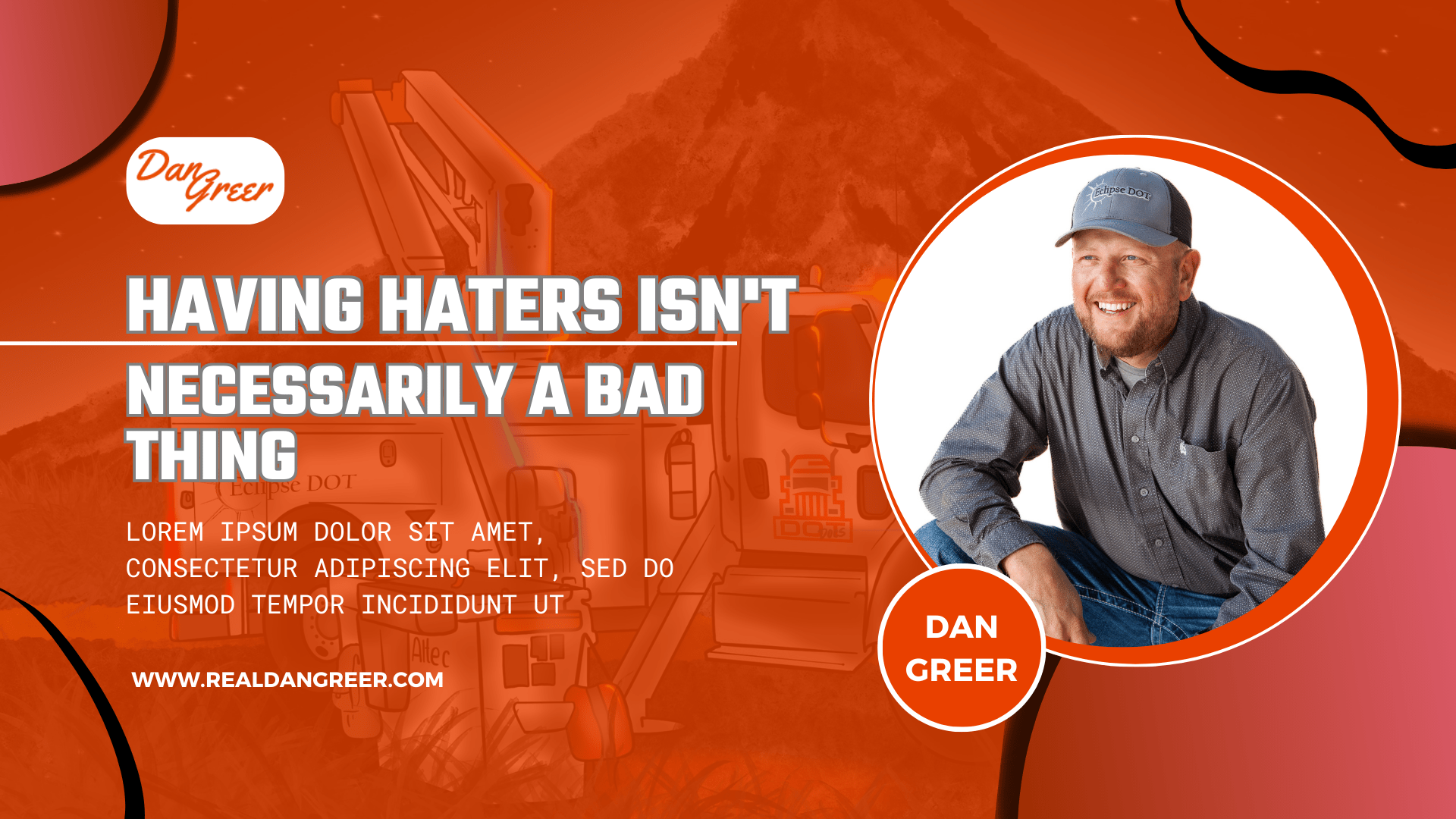Having Haters isn’t Necessarily a Bad Thing
One aspect of our business involves delivering training services to companies. We enter their premises and conduct training sessions covering a wide range of topics.
Among the topics we’ve covered are: defensive driving, protocols for being the first responder at an accident scene, forklift operations, equipment safety, OSHA compliance, vehicle inspections, load securing, various DOT-related aspects, preventing slips and falls, drug awareness, hazmat protocols, and much more.
During a recent session with a company’s drivers, we discussed the procedures to follow if they encounter an accident while driving and are the first responders at the scene.
Drawing from my experience in firefighting, this question was straightforward for me.
I explained that my immediate actions would be to activate my hazard lights and dial 911. Simultaneously, I would approach the accident scene to assess the severity of the situation. If anyone required urgent medical attention, I would inform 911 promptly.
Continuing, I elaborated on using my vehicle strategically as a protective barrier. I likened this tactic to how fire trucks position themselves at an angle across a lane of traffic when responding to accidents, effectively shielding the scene from oncoming traffic.
The rationale behind this approach is to prevent a bad situation from turning catastrophic. If an inattentive driver speeds down the road, they would collide with the protective truck instead of entering the accident scene, thereby averting a more dire outcome.
By hitting the truck, which is easily replaceable, the driver would then be redirected away from the accident site, minimizing potential damage.
One of the drivers took offense to this suggestion. He became defensive and asserted that he wouldn’t follow such a protocol, stating that it wasn’t his responsibility.
I reiterated that the decision was entirely theirs, but personally, I would prioritize saving lives even if it meant sacrificing my vehicle.
Following the training, the company’s manager approached me, expressing gratitude for the valuable advice shared with the team. He mentioned a desire to integrate this approach across the department, which was encouraging feedback that I appreciated.
A few weeks later, I received an unexpected call from a local state trooper. “Hey Dan, are you instructing drivers that it’s their RESPONSIBILITY to BLOCK roads during accidents or traffic delays?” I was taken aback by the question.
Surprisingly, those were the exact words conveyed to the trooper by one driver. I took a moment to clarify the actual conversation and what I had specifically advised the drivers.
As we concluded our discussion, he remarked, “Dan, that’s invaluable advice you’re sharing. I’m not sure how this misunderstanding occurred, but if you conveyed what you’ve just explained to me, your guidance could truly save lives on the road. Thank you for your efforts!”
A few days later, I encountered the driver who spoke to the state trooper, but neither he nor his wife would meet my gaze.
I chuckled quietly at the situation because I trusted that God was looking out for me. Having a critic isn’t always negative; it often signifies progress in my field.
As I reflect on this, I realize the importance of sharing this story. I once collaborated with this individual to launch their business successfully. However, when they consistently sought shortcuts, it became clear that our professional alignment wasn’t ideal.
I silently chuckled at the scenario, confident that I had divine support. Understanding that having detractors isn’t necessarily negative—it often signifies progress in my field—I couldn’t help but smile as I penned these thoughts.
I’ve been through it all and believe sharing my experience could be enlightening for you too. Initially, I aided this individual in launching their business venture. However, their persistent desire to take shortcuts made it clear that our collaboration wouldn’t be fruitful in the long run.
So, I gracefully ended the partnership without any ill feelings on my part. As of today, their business still maintains the same revenue levels as when we parted ways, whereas ours has grown fivefold in the same period. I’m not sharing this to boast; in fact, it was a bit challenging to include it here.
I mention this to highlight how success can sometimes breed envy, leading others to become detractors. If you’re someone dedicated to hard work, we have five openings available in our business coaching program. For more information, feel free to email me at Dan@eclipse-dot.com.
Until next time,
Dan Greer
Discover our CDL & DOT Compliance blog for an exclusive trial at DOTDocs.com. Also, claim your FREE micro audit at THE ECLIPSE DOT MICRO AUDIT. Ready for smoother operations?




